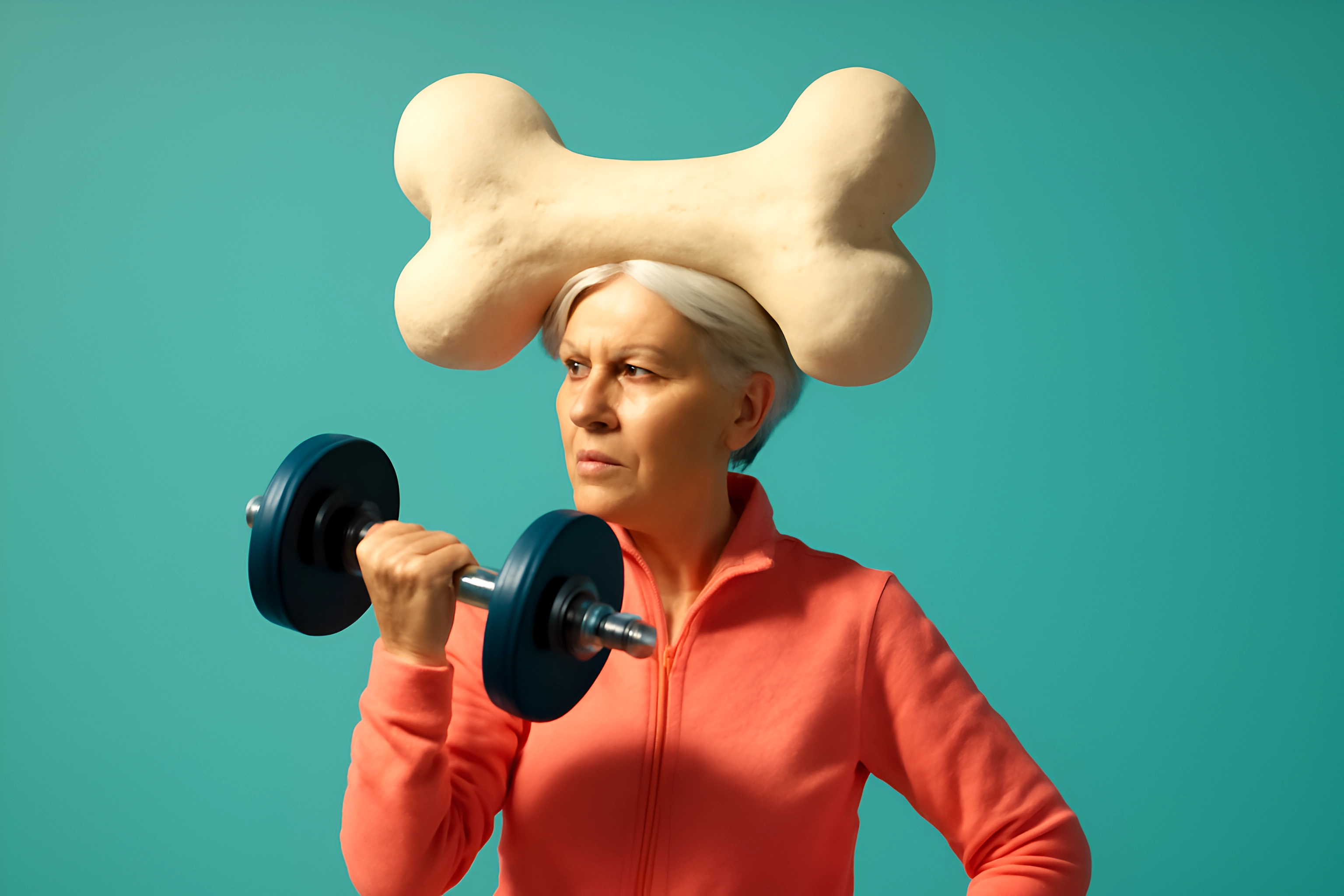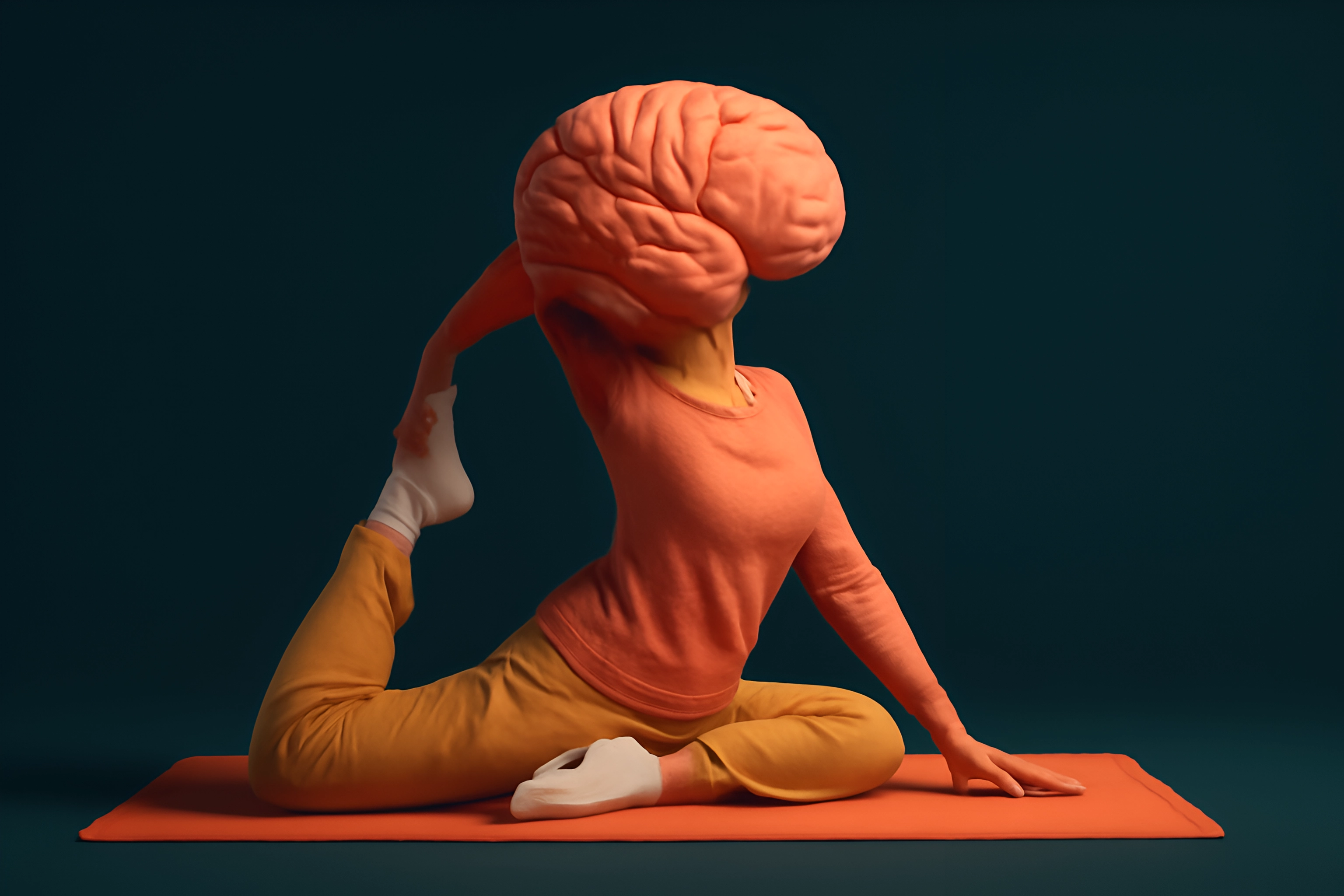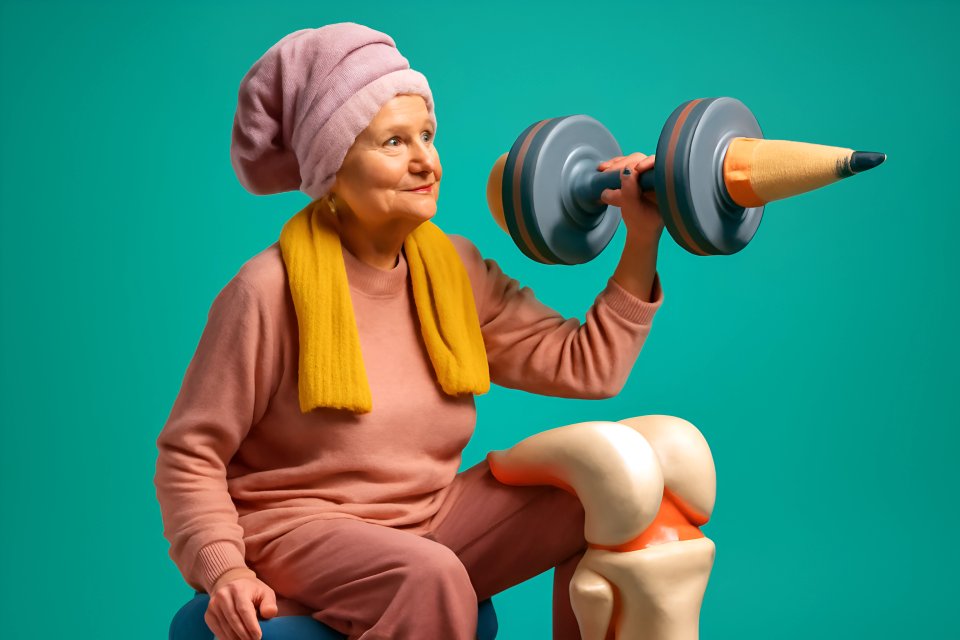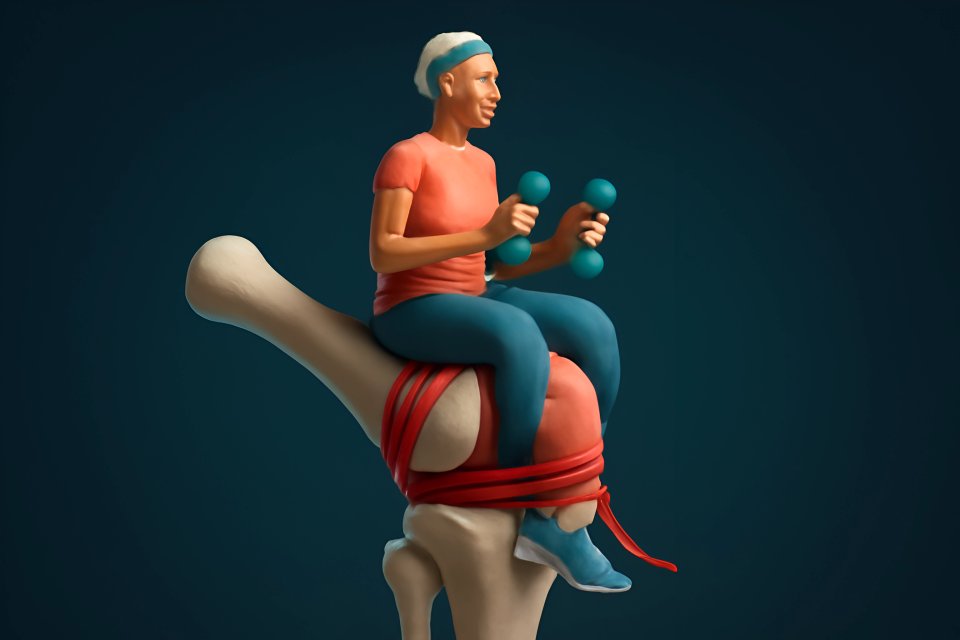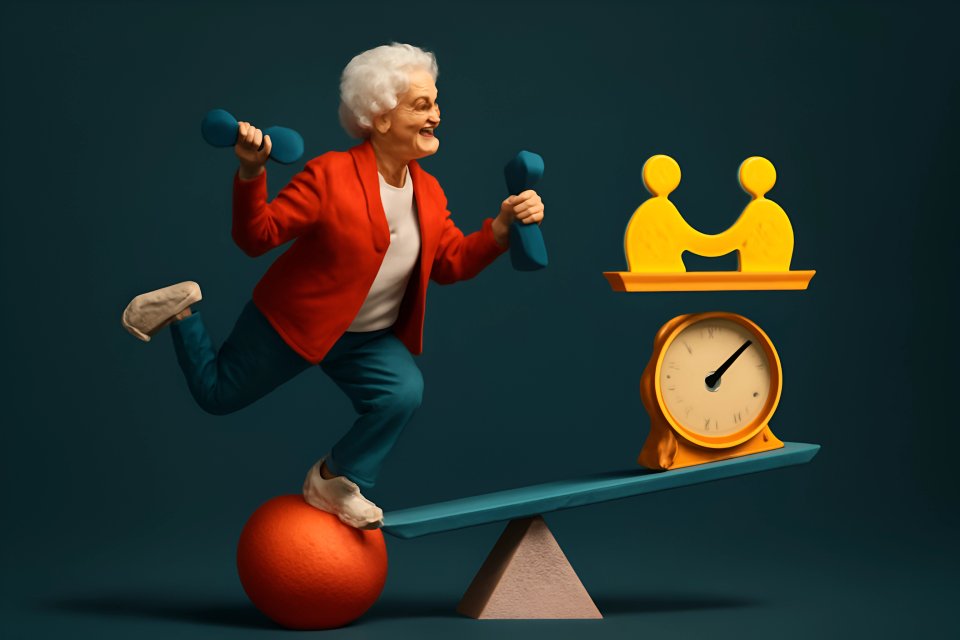
Introduction: The Power Couple of Fitness After 50
Ever feel like you're caught in a tug-of-war between wanting to be strong enough to lift the grandkids and flexible enough to tie your own shoes without groaning? You're not alone. It’s a silent battle many of us face as the years gracefully add up, a quiet negotiation between the strength we remember and the stiffness we now feel.
After 50, our bodies begin a new chapter. We naturally experience a decline in muscle mass, a condition known as sarcopenia, and our joints can feel less forgiving than they used to. This isn't a defeat; it's simply a new set of rules for the game of life, demanding a smarter, more strategic approach to our fitness.
The key isn't choosing one discipline over the other. The real secret to unlocking lasting vitality lies in creating a balanced strength training program for over 50 that intelligently combines the power of resistance with the grace of flexibility. This post is your step-by-step guide to building a routine that makes you feel strong, mobile, and unshakably confident in your own skin.
The Two Pillars of Aging with Vitality
The Case for Resistance Training: More Than Just Muscle
Let’s get one thing straight: strength training isn’t about becoming a bodybuilder. It’s about reclaiming your power and independence. Effective resistance training for seniors is your number one defense against age-related muscle loss, a process that can rob you of 3 to 8 percent of your muscle mass per decade after age 30, according to Healthline.
This isn't just about looking toned; it's about function and survival. Strong muscles support strong bones, dramatically reducing your risk of osteoporosis and life-altering fractures. Furthermore, building lean muscle boosts your metabolism, helping you manage your weight, and fundamentally improves your balance, which is your best defense against falls.
Think of it as building a suit of armor, one that protects you, empowers you, and allows you to move through the world with confidence. As you'll find in this guide to restoring mobility and strength after age 50, simple, targeted exercises are all it takes to fortify your body for the years ahead.
The Unsung Hero: Why Flexibility is Crucial
If resistance training is your armor, then flexibility is the oil that keeps every joint moving smoothly. It’s the unsung hero of fitness after fifty, often overlooked in the quest for strength. But without it, that armor becomes stiff, restrictive, and ultimately, less effective.
Meaningful flexibility workouts for over fifty are about so much more than being able to touch your toes. They are about maintaining and improving your joints' range of motion, which translates directly to less stiffness and fewer of those everyday aches and pains. The NHS confirms that simple flexibility exercises are a powerful tool for reducing the risk of muscle strains and injuries.
Better flexibility means better posture, allowing you to stand tall and proud. It means you can reach for that jar on the top shelf, bend down to garden, or get on the floor to play with your pets without a second thought. It is the very essence of functional, pain-free movement.
The Synergy: How They Make Each Other Better
Here is the secret that unlocks true strength and mobility over 50: resistance and flexibility aren't separate goals; they are partners that make each other better. You cannot truly have one without the other. This integrated approach is the foundation of a truly sustainable and effective fitness plan.
Flexibility directly supports your strength efforts. To perform a squat or a lunge with proper form, you need adequate mobility in your hips, knees, and ankles. Without it, you risk injury and get subpar results. As physiotherapist Will Harlow explains, performing exercises through their full range of motion is key to improving both strength and flexibility simultaneously.
Conversely, strength supports your flexibility. Strong, stable muscles protect your joints, allowing you to stretch more deeply, safely, and effectively. This powerful synergy creates a positive feedback loop where every squat makes your stretches better, and every stretch makes your squats safer and more powerful.
Your Foundational Resistance Exercises
The best resistance exercises are the ones that mimic the movements you do every single day. Forget complicated machines; your body, with the occasional light dumbbell, is the only tool you need. For a deeper dive into gentle movements, our guide on adaptive resistance training for seniors offers even more safe and effective options.
A perfect starting point is the Chair Squat. Stand in front of a sturdy chair, feet shoulder-width apart, and lower your hips back and down as if you’re about to sit, just tapping the chair before standing back up. This builds the leg strength you need to get up from any seat with ease. Another fantastic move is the Wall Push-Up, which strengthens your chest, shoulders, and core—essential for pushing open heavy doors or catching yourself from a stumble.
To build a strong back and improve your posture, the Dumbbell Row is your best friend. Hinge at your hips with a flat back, holding a light dumbbell, and pull the weight up towards your chest, squeezing your shoulder blade. This collection of beginner-friendly exercises for older adults reinforces that simple, compound movements are the key to functional strength.
Your Essential Flexibility Moves
To get the most out of your routine, it’s crucial to understand the two main types of stretching. Dynamic stretches involve active movement and are perfect for your warm-up, while static stretches involve holding a position and are best for your cool-down. This approach prepares your body for work and helps it recover afterward.
Before your workout, focus on dynamic movements to get the blood flowing. Gentle Arm Circles, both forward and backward, will warm up your shoulder joints. Torso Twists, done slowly and with control, will prepare your core and spine for movement. Finally, gentle Leg Swings while holding onto a chair for support will ready your hips for action.
After your workout, it’s time for static stretches to lengthen your muscles and improve your range of motion. The Mayo Clinic offers a fantastic guide to basic stretches that are safe and effective. Try a Doorway Chest Stretch to open up your posture, a Standing Hamstring Stretch using a chair for support, and a Seated Glute Stretch to relieve hip tension. For more ideas, explore our guide to customized flexibility and mobility routines for seniors.
Putting It All Together: Your Sample Weekly Blueprint
How to Structure Your Week for Success
The secret to long-term success isn't crushing yourself in the gym; it's consistency. Aim for two to three strength sessions per week, making sure to schedule them on non-consecutive days. This gives your muscles the time they need to recover, repair, and grow stronger.
Each workout should follow a simple, effective flow. This structure ensures you prepare your body properly, get the most out of your efforts, and cool down safely to prevent injury and reduce soreness. Think of it as a three-act play for your fitness.
Your perfect workout flow should look like this:
1.Warm-Up (5-10 mins):Start with light cardio like marching in place, followed by your dynamic stretches. 2.Resistance Training (20-30 mins):Perform 2-3 sets of 8-12 repetitions for your chosen exercises. 3.Cool-Down (5-10 mins):Finish with your static stretches, holding each for 30 seconds without bouncing.
This simple blueprint is the core of a sustainable routine. For more tips on creating a schedule that works for you, see our guide on how to build a low-impact exercise routine over 50.
Sample Weekly Schedule
Here is a sample blueprint to get you started. Remember, this is a template, not a prescription. Adjust it to fit your life, your energy levels, and your schedule. The best plan is the one you can stick with.
| Day | Activity | Focus |
|---|---|---|
| Monday | Full-Body Strength Session | Strength & Mobility |
| Tuesday | Active Recovery | Gentle Movement (Walk, Yoga) |
| Wednesday | Rest | Recovery & Rejuvenation |
| Thursday | Full-Body Strength Session | Strength & Mobility |
| Friday | Active Recovery | Dedicated Flexibility Work |
| Saturday | Rest & Hobbies | Enjoy Life! |
| Sunday | Rest & Hobbies | Enjoy Life! |
On your active recovery days, consider a brisk walk, some light gardening, or a dedicated session from our beginner's guide to Senior Pilates. These activities keep you moving without taxing your muscles, promoting blood flow and speeding up recovery.
Smart and Safe Progression: Growing Stronger Without Injury
The Golden Rule: Listen to Your Body
Your body is your wisest coach—if you learn to listen to it. It’s essential to understand the difference between the satisfying burn of muscle fatigue, which signals growth, and the sharp, stabbing pain that signals a problem. Never push through true pain.
The mantra for safe and effective training at any age, but especially after 50, is:
Move well first, then move more.Perfect form is always more important than the amount of weight you're lifting or the number of repetitions you're doing. If you're managing discomfort, our guide to strength training modifications for seniors with joint pain is an invaluable resource.
Finally, never underestimate the power of rest. Your muscles don't get stronger during the workout; they get stronger during the recovery period afterward. Your rest days are just as crucial as your training days for building a resilient, capable body.
How to Know When and How to Progress
So, how do you know when it's time to take things up a notch? The signal is simple: you should progress when you can comfortably complete all of your planned sets and repetitions with perfect form. If the last two reps of your last set still feel challenging but doable, you're in the sweet spot.
When you're ready to progress, choose only one variable to change at a time. This allows your body to adapt gradually, minimizing the risk of injury. You can increase your reps (from 10 to 12), add another set (from 2 to 3), increase the weight slightly, or decrease the rest time between your sets.
This method of gradual overload is the safest way to build strength and endurance. By making small, incremental changes, you can ensure your routine remains both effective and sustainable. For more tips on this, explore our guide to mastering sustainable low-impact workouts for seniors.
Conclusion: Your Journey to a Balanced, Vibrant You
A truly effective fitness plan after 50 isn't about chasing extremes or trying to turn back the clock. It's about embracing wisdom, balance, and sustainability. Combining the foundational power of strength with the liberating grace of flexibility is your ticket to moving better, feeling stronger, and living with more unshakeable vitality.
It is never too late to invest in your health, your independence, and your future. This balanced strength training program for over 50 is not a quick fix; it is a sustainable path toward reclaiming your energy, your confidence, and your joy in movement. You have the power to build a body that can carry you through a vibrant, active, and fulfilling life.
We'd love to hear from you! What's one move—either for strength or flexibility—that you're excited to try this week? Share your plans in the comments below and let's support each other on this journey.









